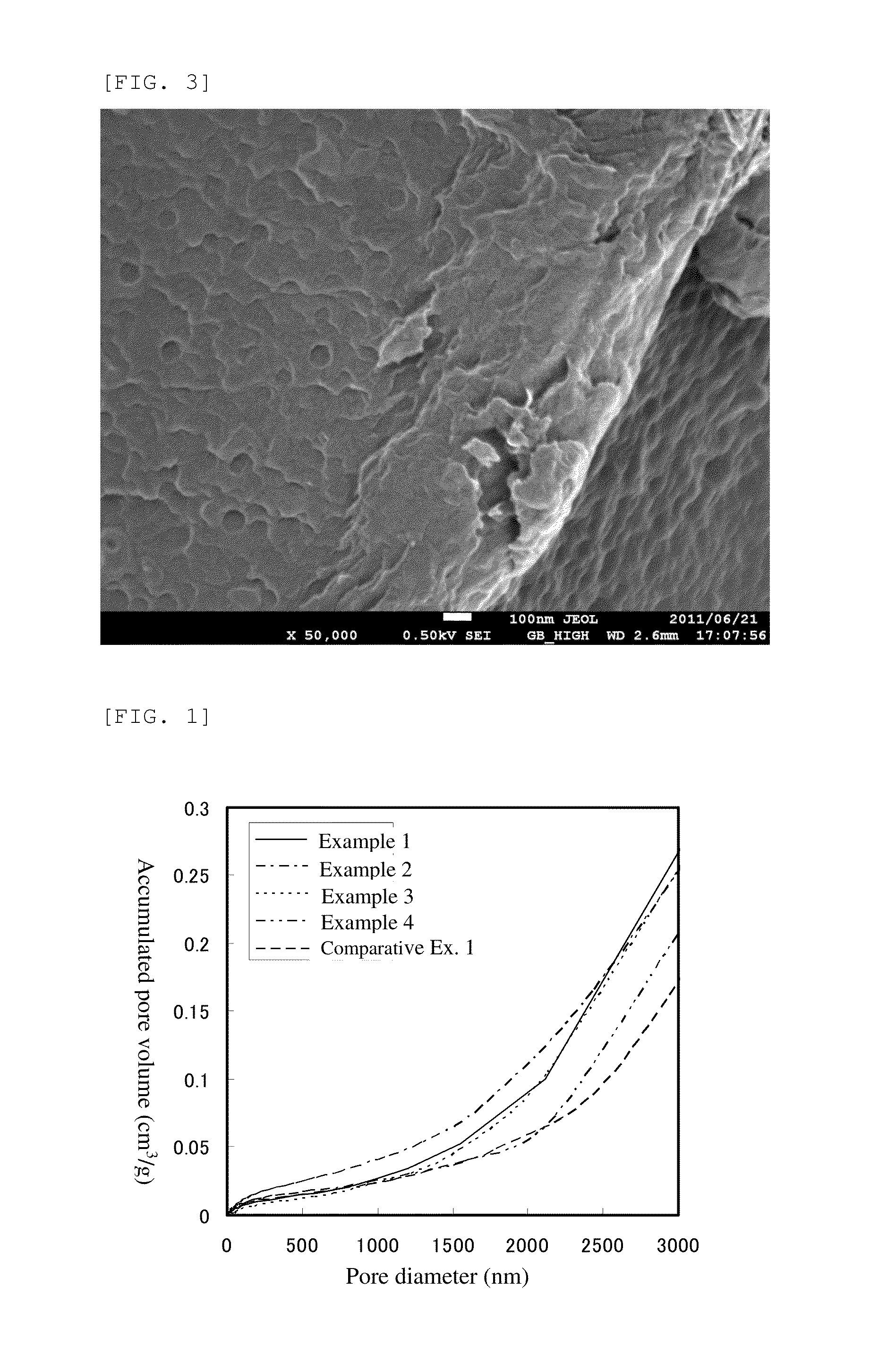Graphite material, carbon material for battery electrode, and battery
- Summary
- Abstract
- Description
- Claims
- Application Information
AI Technical Summary
Benefits of technology
Problems solved by technology
Method used
Image
Examples
example 1
[0184]A residue obtained by distilling Mexican crude oil under reduced pressure is used as a material. The properties of the material are as follows: specific gravity: 0.7° API, Asphaltene component: 15% by mass, resin component: 14% by mass, and sulfur component: 5.3% by mass. This material is injected into a delayed coking process. At this time, the process is performed at a heating furnace heater output temperature of 560° C. before a coke drum. The internal pressure is set to be about 207 kPa (30 psig). The coke is cooled with water and discharged from the coke drum. The obtained coke is heated at 120° C. and dried to a moisture-containing ratio of 0.5% by mass or less. At this time, the reduced amount by heating in an argon atmosphere from 300° C. to 1,200° C. is 13.1% by mass. The dried coke is crushed with a Bantam mill produced by Hosokawa Micron Corporation. Next, the crushed coke is subjected to air-flow screening with Turboclassifier TC-15N produced by Nisshin Engineering...
example 2
[0187]A residue obtained by distilling Californian crude oil under reduced pressure is used as a material. The properties of the material are as follows: specific gravity: 3.0° API, Asphaltene component: 28% by mass, resin component: 11% by mass, and sulfur component: 3.5% by mass. This material is injected into a delayed coking process. At this time, the internal pressure is set to be about 214 kPa (31 psig) and the process is performed at a heating furnace heater output temperature of 570° C. before a coke drum. Then, the obtained coke is granulated to a particle diameter of about 3 to 8 mm unlike the ordinary process. The coke is cooled with water and discharged from the coke drum. Then, the coke is heated at 120° C. and dried to a moisture-containing ratio of 0.5% by mass or less. At this time, the reduced amount by heating in an argon atmosphere from 300° C. to 1,200° C. is 12.8% by mass. The dried coke is crushed with a Bantam mill produced by Hosokawa Micron Corporation. Next...
example 3
[0190]A residue obtained by distilling Venezuelan crude oil under reduced pressure is used as a material. The properties of the material are as follows: specific gravity: 3.4° API, Asphaltene component: 21% by mass, resin component: 11% by mass, and sulfur component: 3.3% by mass. This material is injected into a delayed coking process. At this time, the internal pressure is set to be about 138 kPa (20 psig) and the process is performed at a heating furnace heater output temperature of 570° C. before a coke drum. The coke is cooled with water and discharged from the coke drum. The obtained coke is heated at 120° C. and dried to a moisture-containing ratio of 0.5% by mass or less. At this time, the reduced amount by heating in an argon atmosphere from 300° C. to 1,200° C. is 11.8% by mass. The dried coke is crushed with a bantam mill produced by Hosokawa Micron Corporation. Next, the crushed coke is subjected to air-flow screening with Turboclassifier TC-15N produced by Nisshin Engin...
PUM
 Login to View More
Login to View More Abstract
Description
Claims
Application Information
 Login to View More
Login to View More - R&D
- Intellectual Property
- Life Sciences
- Materials
- Tech Scout
- Unparalleled Data Quality
- Higher Quality Content
- 60% Fewer Hallucinations
Browse by: Latest US Patents, China's latest patents, Technical Efficacy Thesaurus, Application Domain, Technology Topic, Popular Technical Reports.
© 2025 PatSnap. All rights reserved.Legal|Privacy policy|Modern Slavery Act Transparency Statement|Sitemap|About US| Contact US: help@patsnap.com



